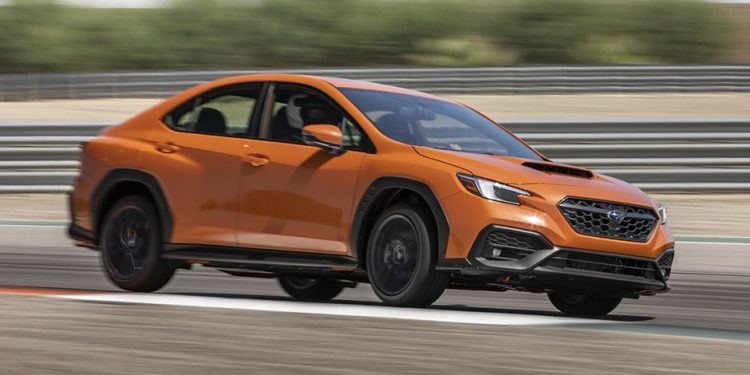New Subaru WRX revealed: Bigger engine, more power, new platform
After delaying its launch a few weeks, Subaru has finally revealed the new WRX. And, for the first time in years, the nameplate has inherited a properly significant update.
Not that you’d necessarily know it just by looking at it. The new WRX looks a lot like the last one. It gets a front fascia torn from the new Levorg, and, for the first time, contrasting black wheel-arch cladding, giving it a crossover-like look.

Inside the cabin looks fairly familiar, too, although that’s because it’s filled with carryovers from the likes of the Outback. It gets the same 11.6-inch portrait infotainment screen, and a similar dashboard layout. The flat-bottomed steering wheel, bucket seats, and possible presence of a manual shifter illustrate that ‘this is the sporty one’ though.
The similarities to the Outback underline perhaps the biggest change in the new WRX; its platform. It rides on the new Subaru Global Platform as the Outback and other models, subsequently distancing itself from the Impreza (and dropping the Impreza nomenclature).

This will be the architecture’s first true test in a performance application, but the early indications are good. Subaru boasts that it features 28 per cent more torsional rigidity than the outgoing platform, and 75 per cent stronger suspension mounting points. We’re keen to see how it deals with the WRX’s turbofour engine and corner-carving all-wheel drive capabilities.
Speaking of, the new WRX gets the largest engine the nameplate has ever received. As rumoured, under the bonnet sits Subaru’s 2.4-litre turbocharged boxer engine, producing 202kW of power and 349Nm of torque.
That’s only a few more kW than the outgoing 197kW WRX, but we suspect there will be greater power improvements for the full fat STI. Subaru hasn’t provided performance figures for the model, so we’ll have to put it up against the clock ourselves once it lands locally.

That power and torque is predictably sent to all four wheels via Subaru’s proprietary symmetrical all-wheel drive system (this is the bit where we’re meant to reference all those World Rally Championship trophies).
The AWD system features torque vectoring, and hooks up to either a six-speed manual or a recalibrated eight-step CVT. The round thing that the driver twirls to steering the car is connected to a new ‘twin-pinion’ electric steering system that Subaru claims brings more natural feel to the driving experience.
Purists will scoff at the ongoing presence of a CVT, but Subaru claims it’s worked on it between generations, shrinking the ‘upshift’ time by 30 per cent and ‘downshift’ times by 50 per cent. With CVTs having improved significantly in the last few years, maybe this is a case of ‘don’t knock it ‘til you try it’?

Subaru has said that the CVT will feature as standard on the WRX’s range’s flagship variant; the WRX GT. The same model also gets electronically controlled active dampers, a feature never seen in a WRX before. We hope that this tech isn’t locked behind a CVT paywall, and is accessible to those who also want a stick.
All up, the new WRX appears to be a compelling package. And, given it’s likely undercut a good chunk of the competitive hot hatch space, we expect it to be as popular as ever. Now, give us the keys please…





